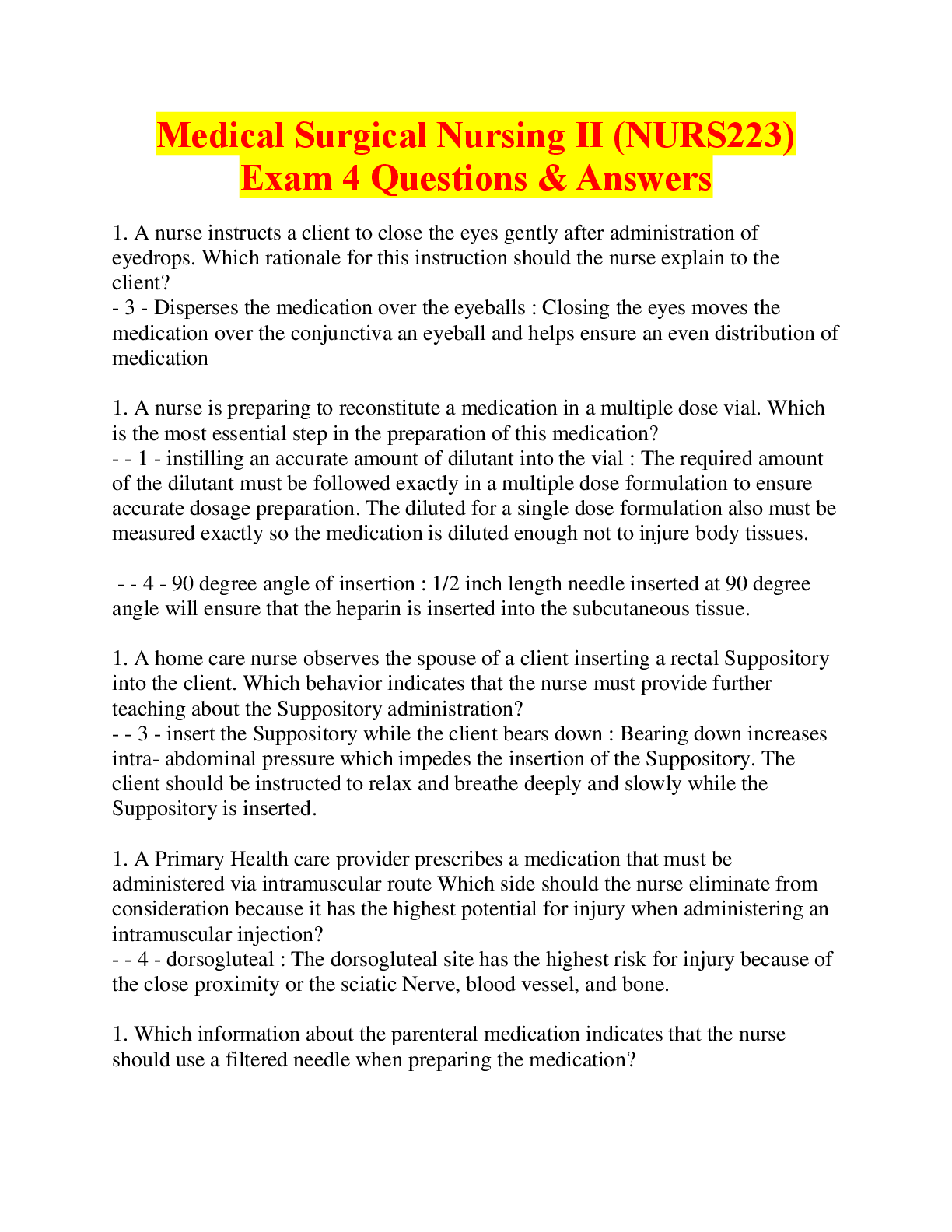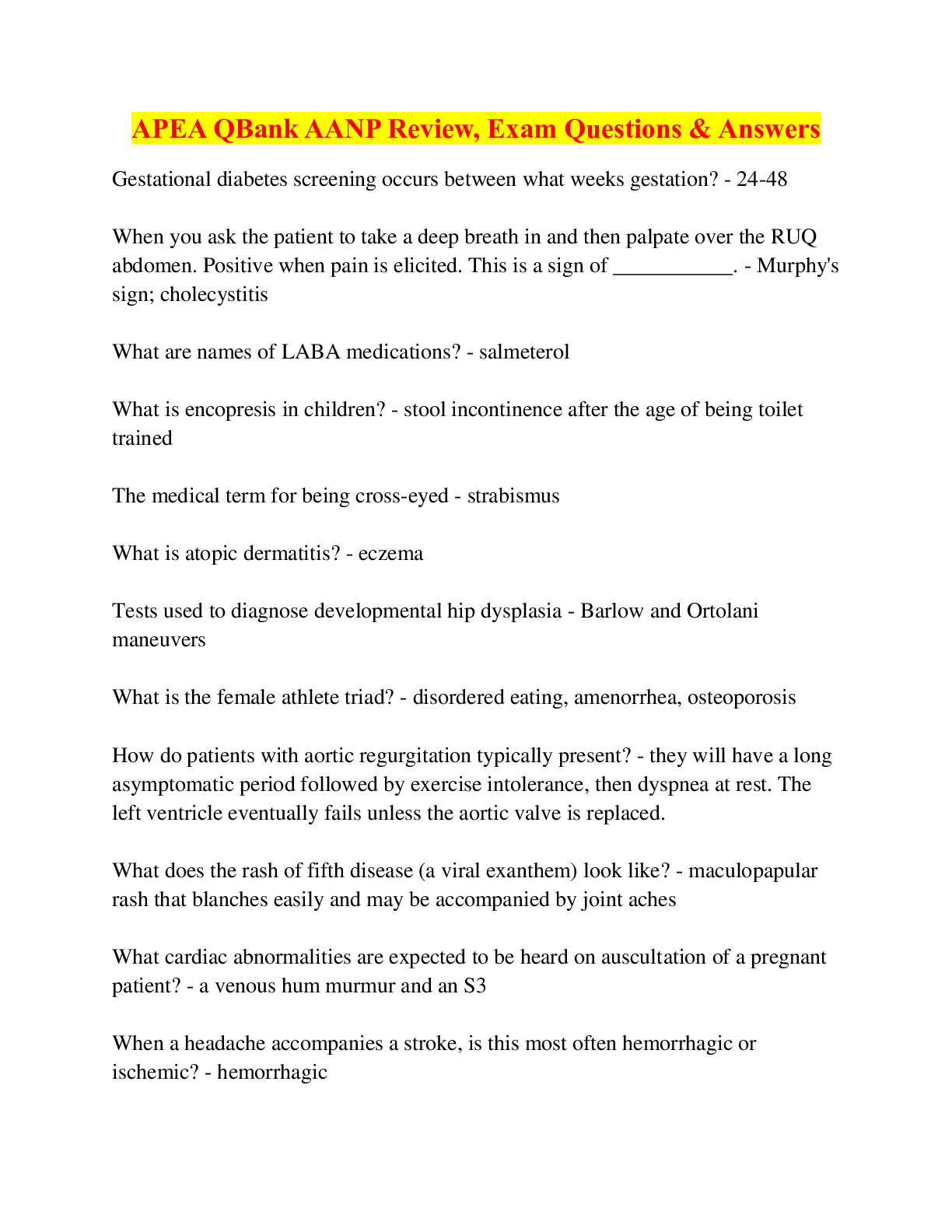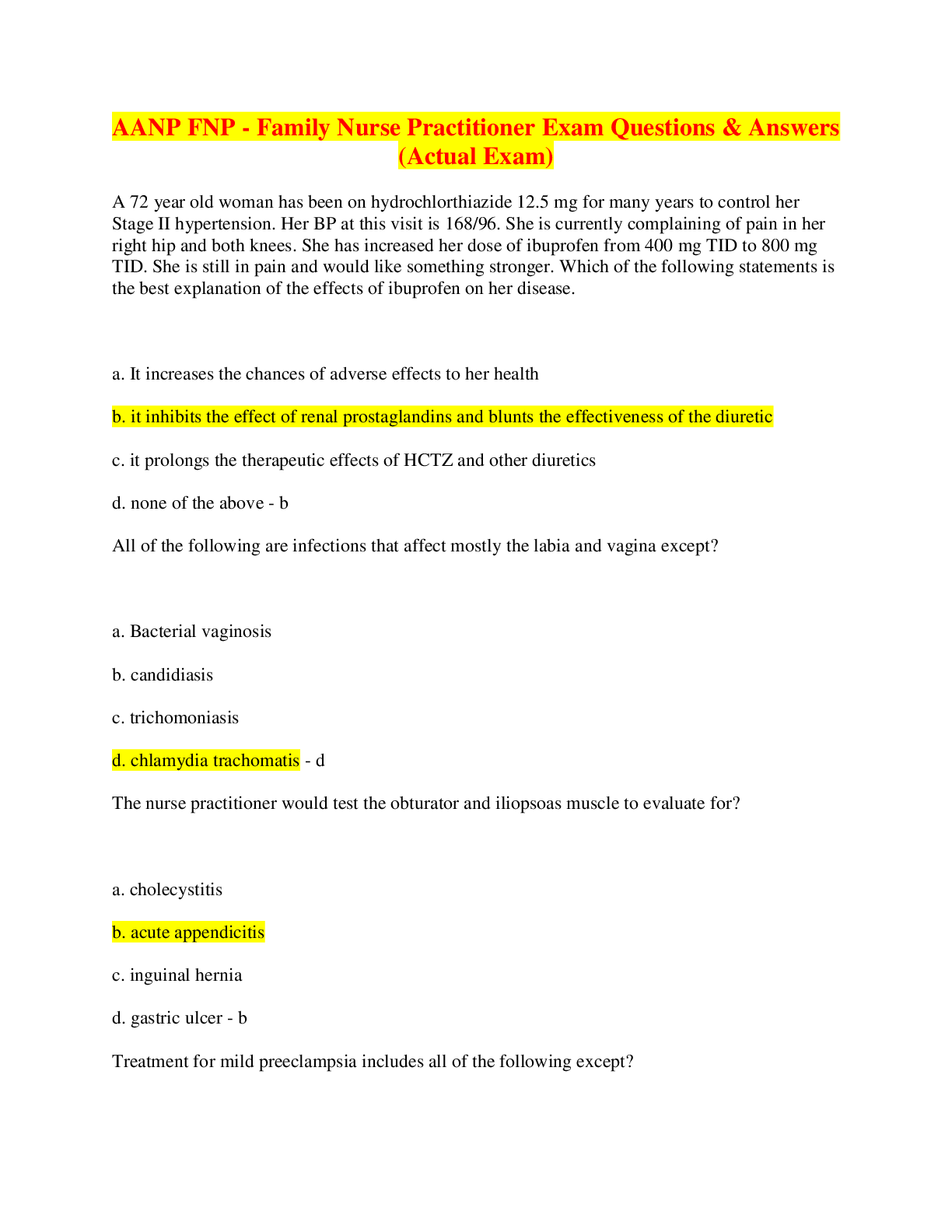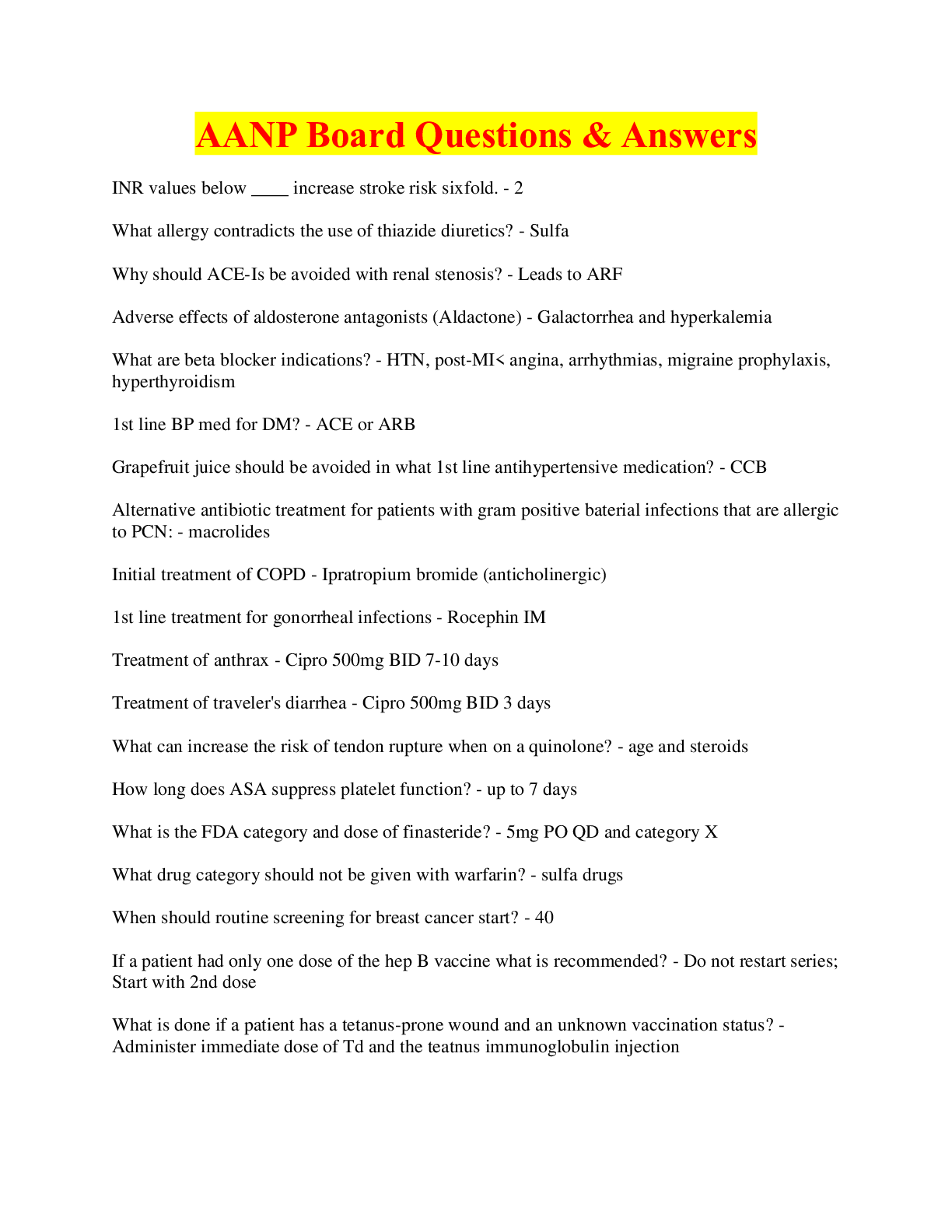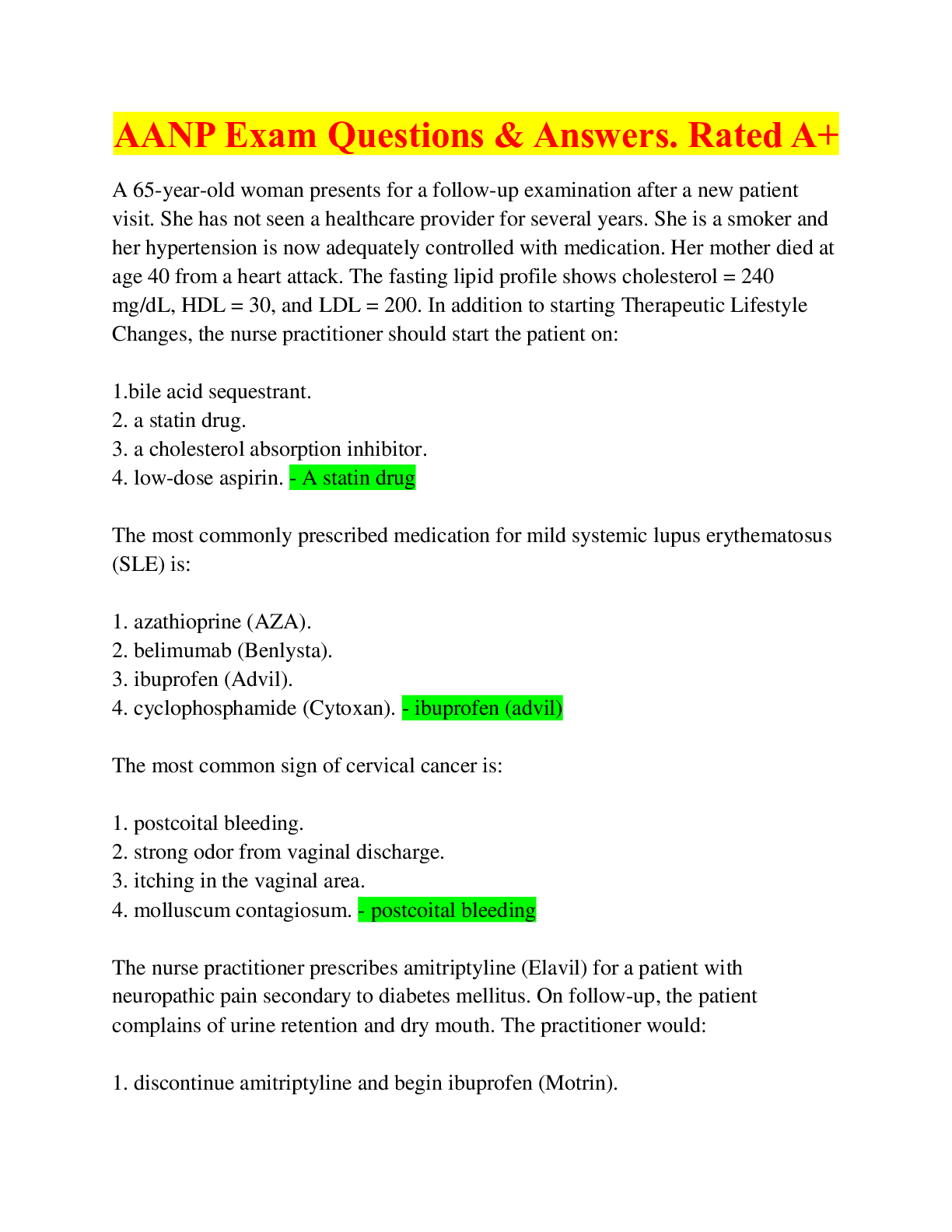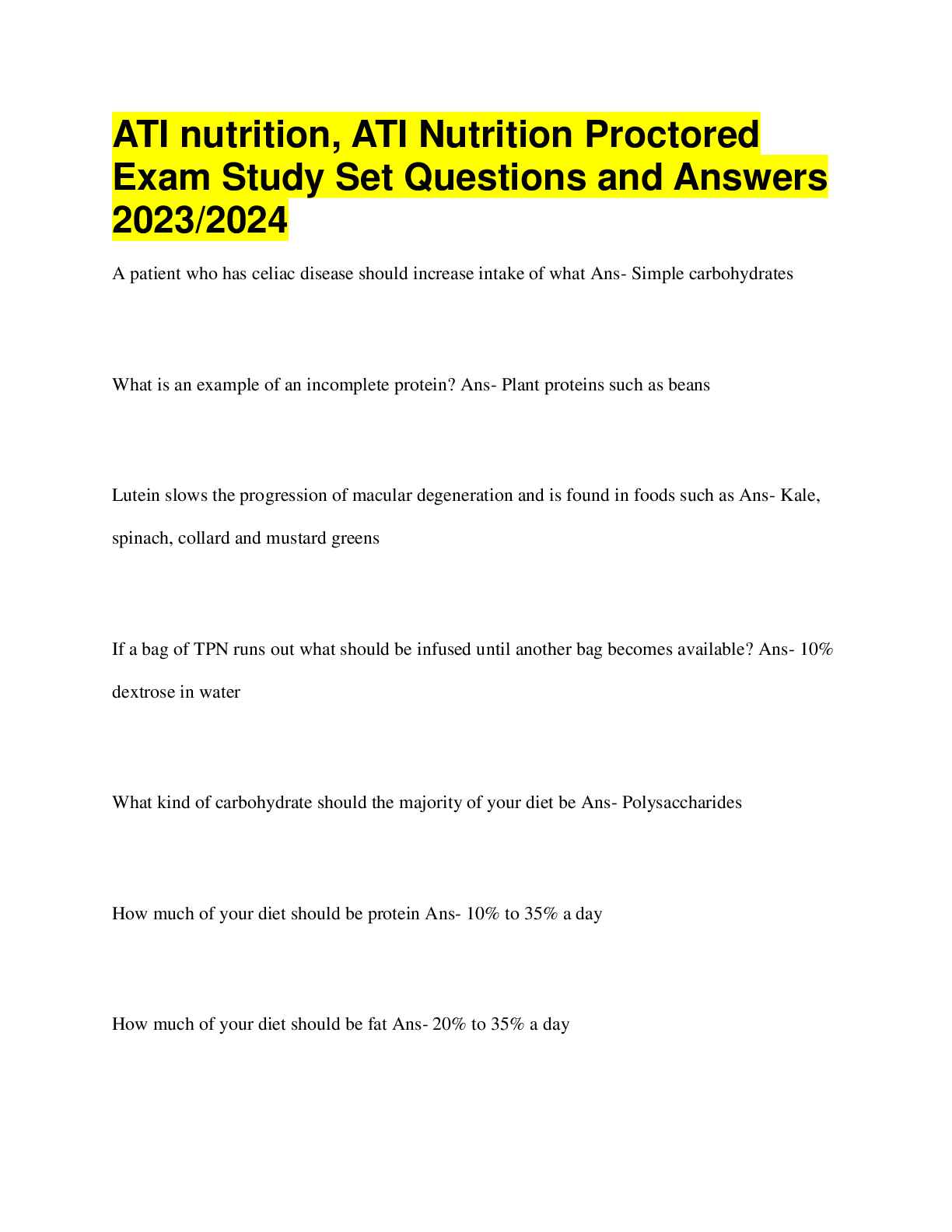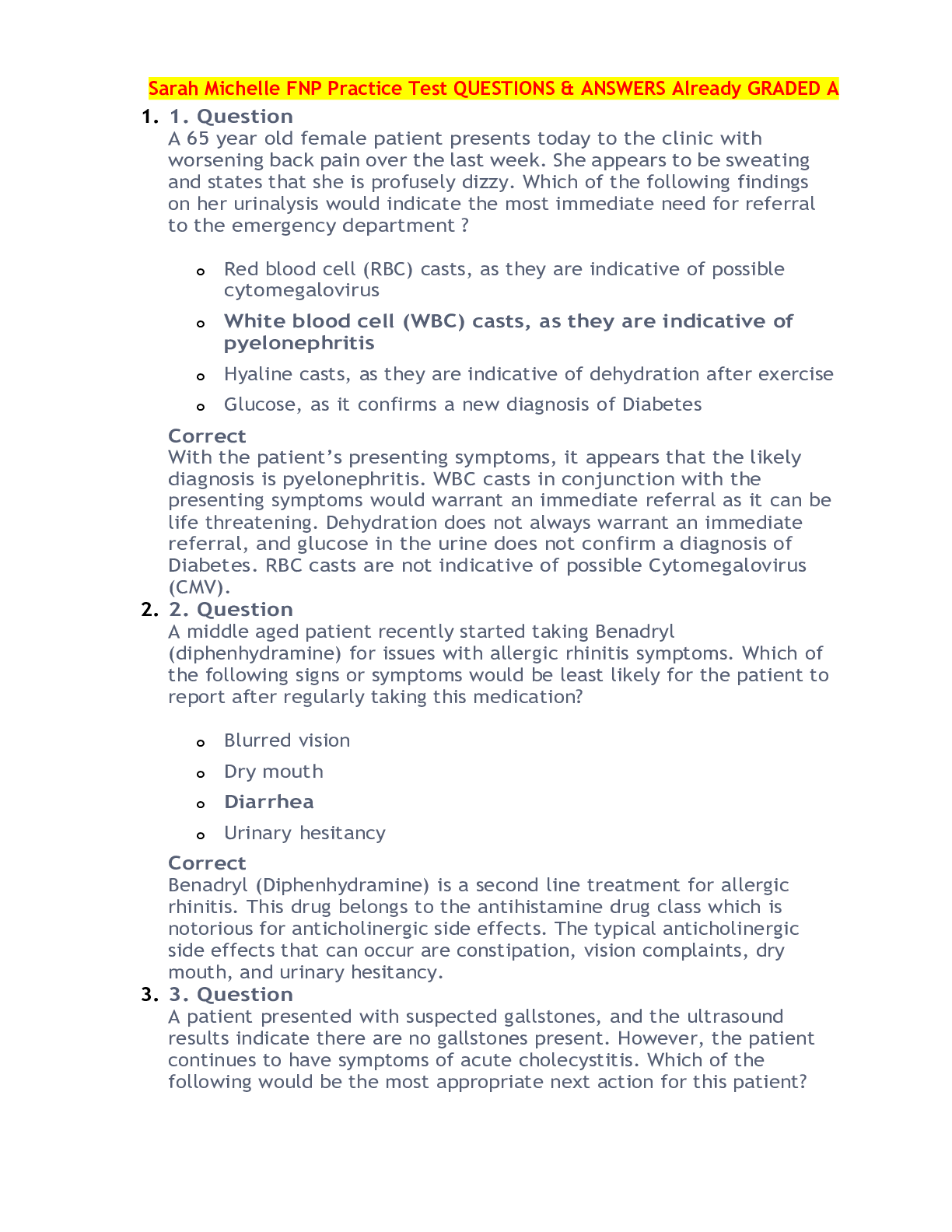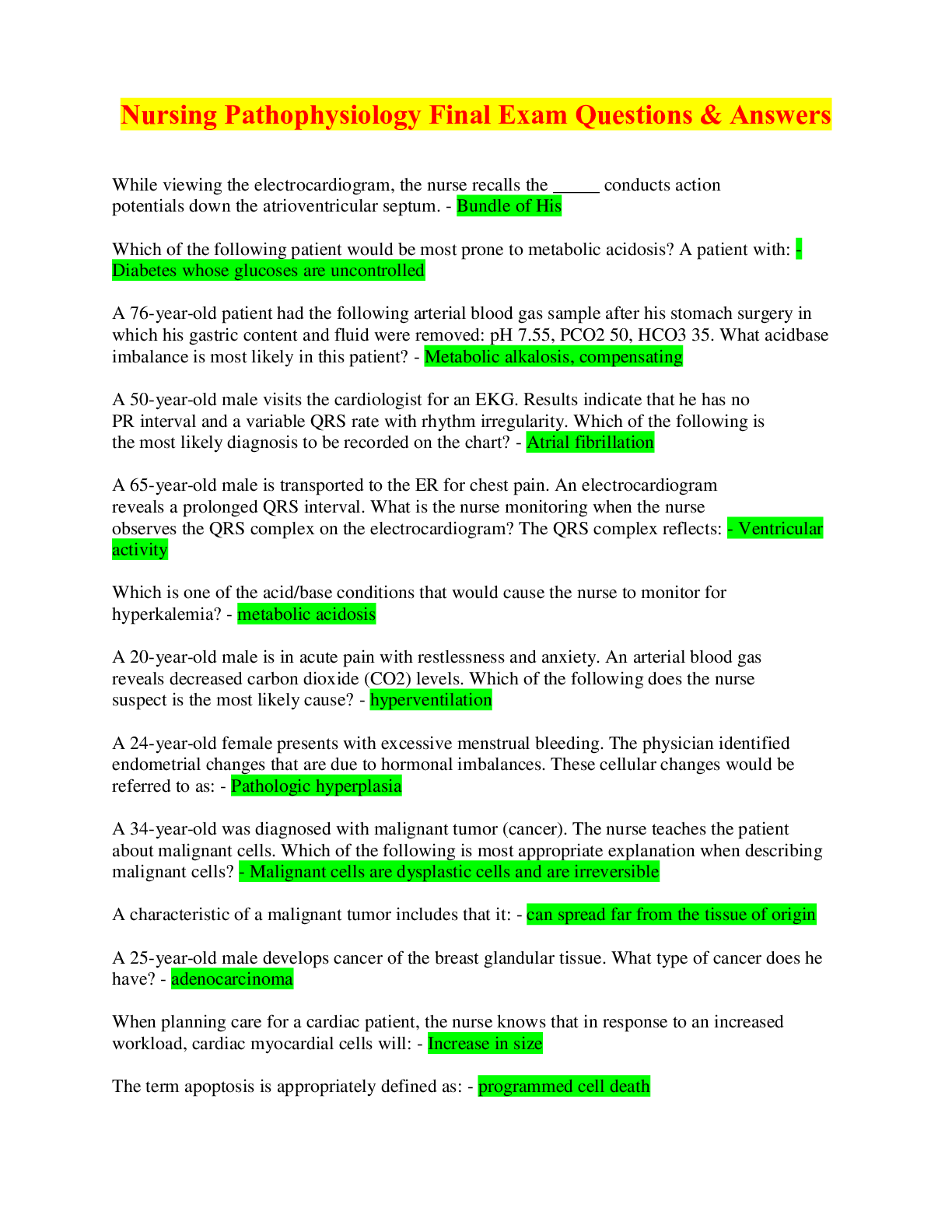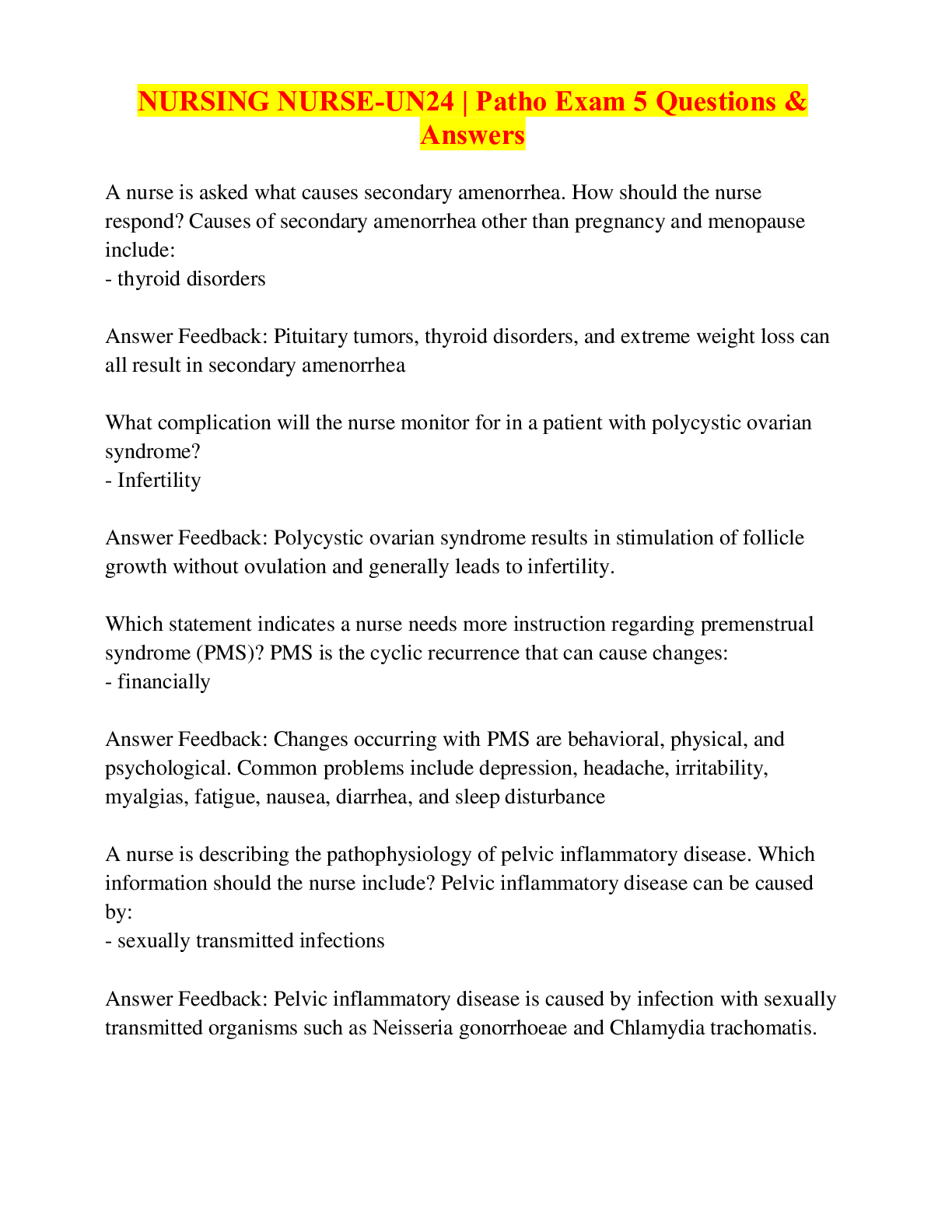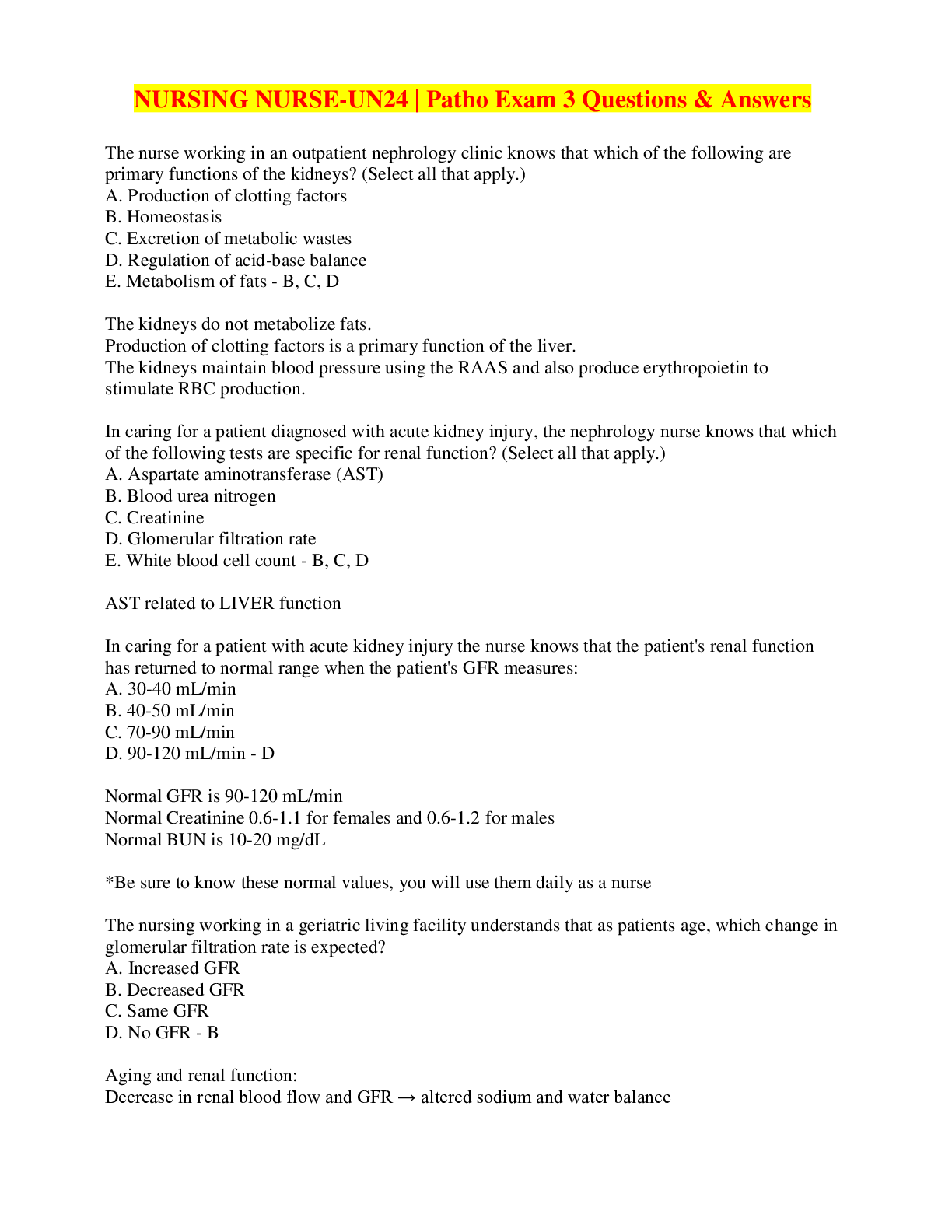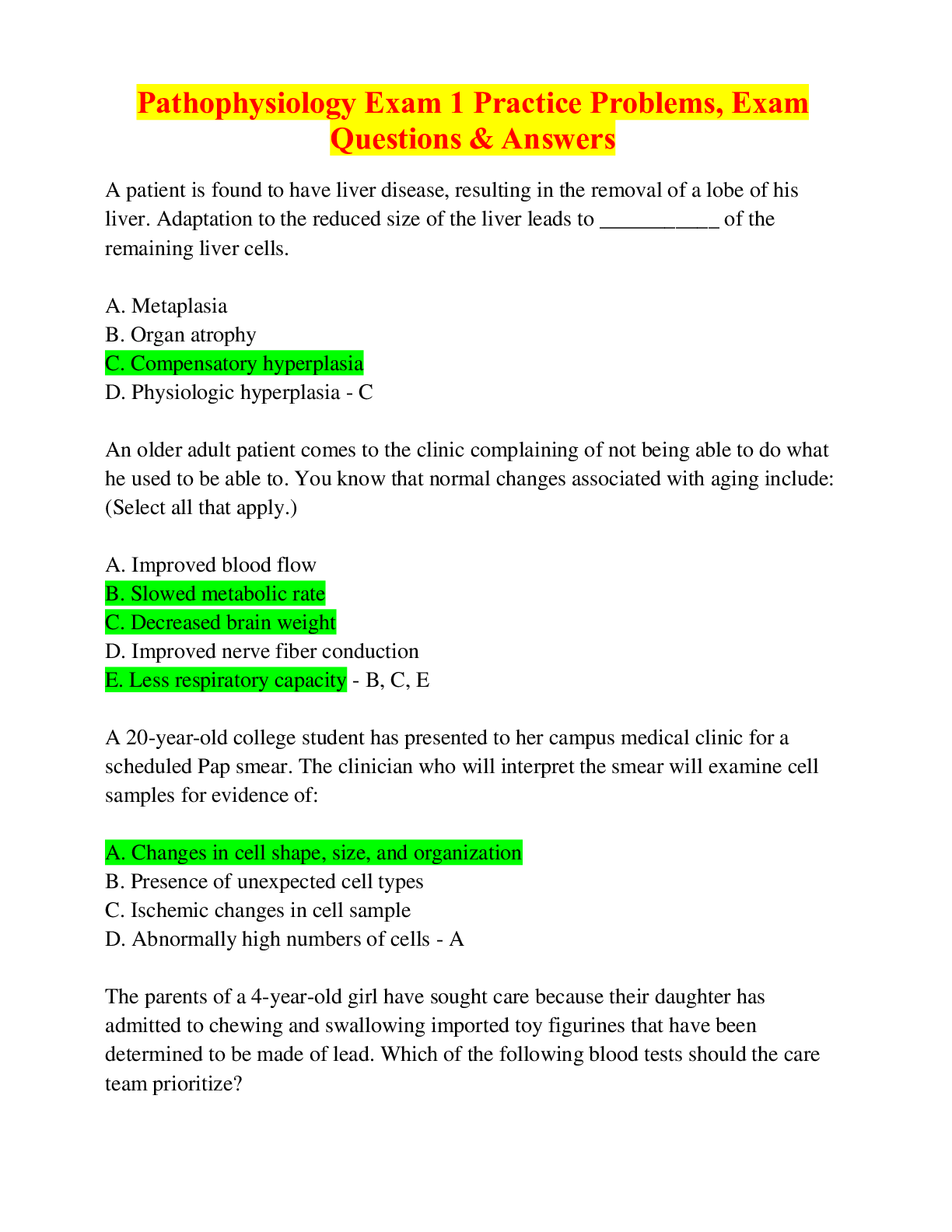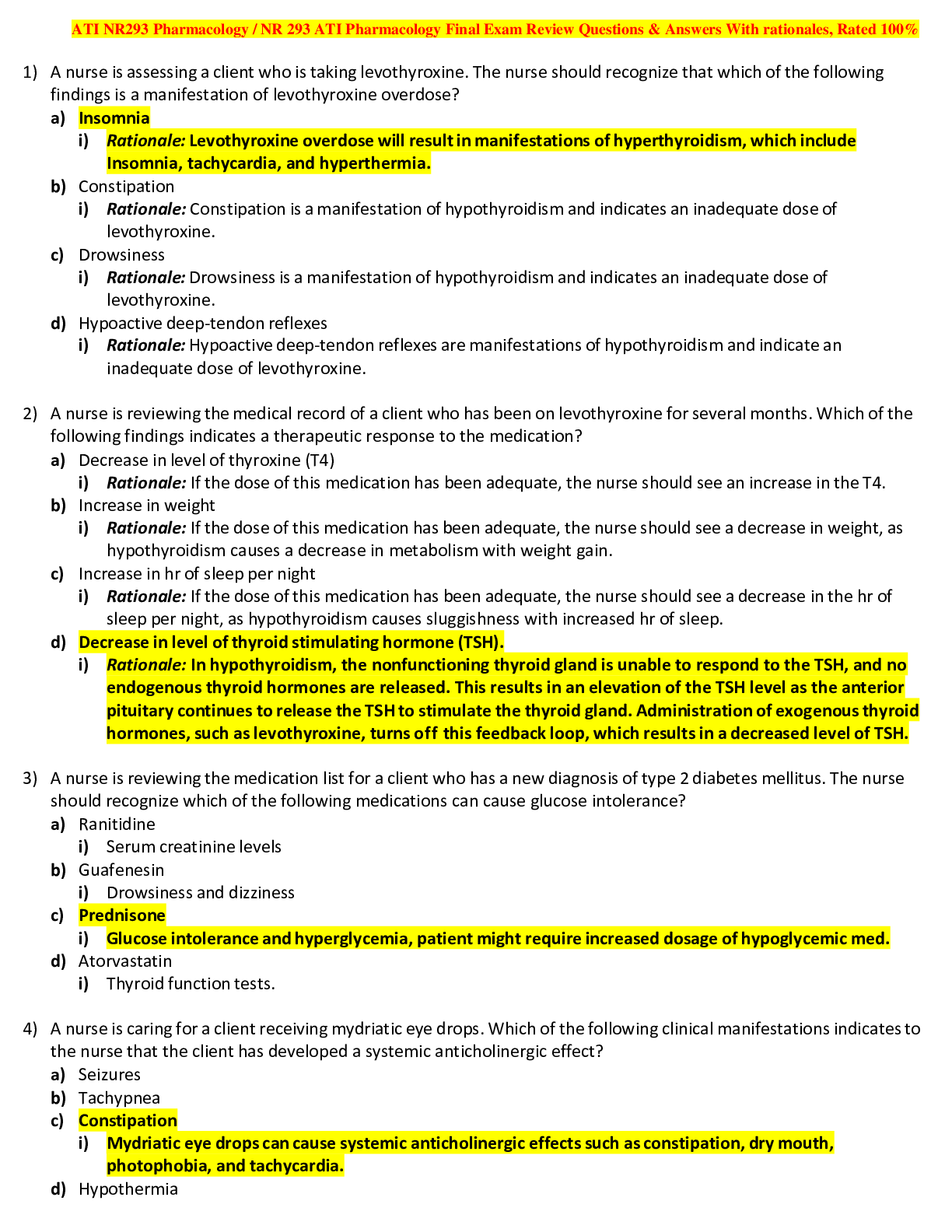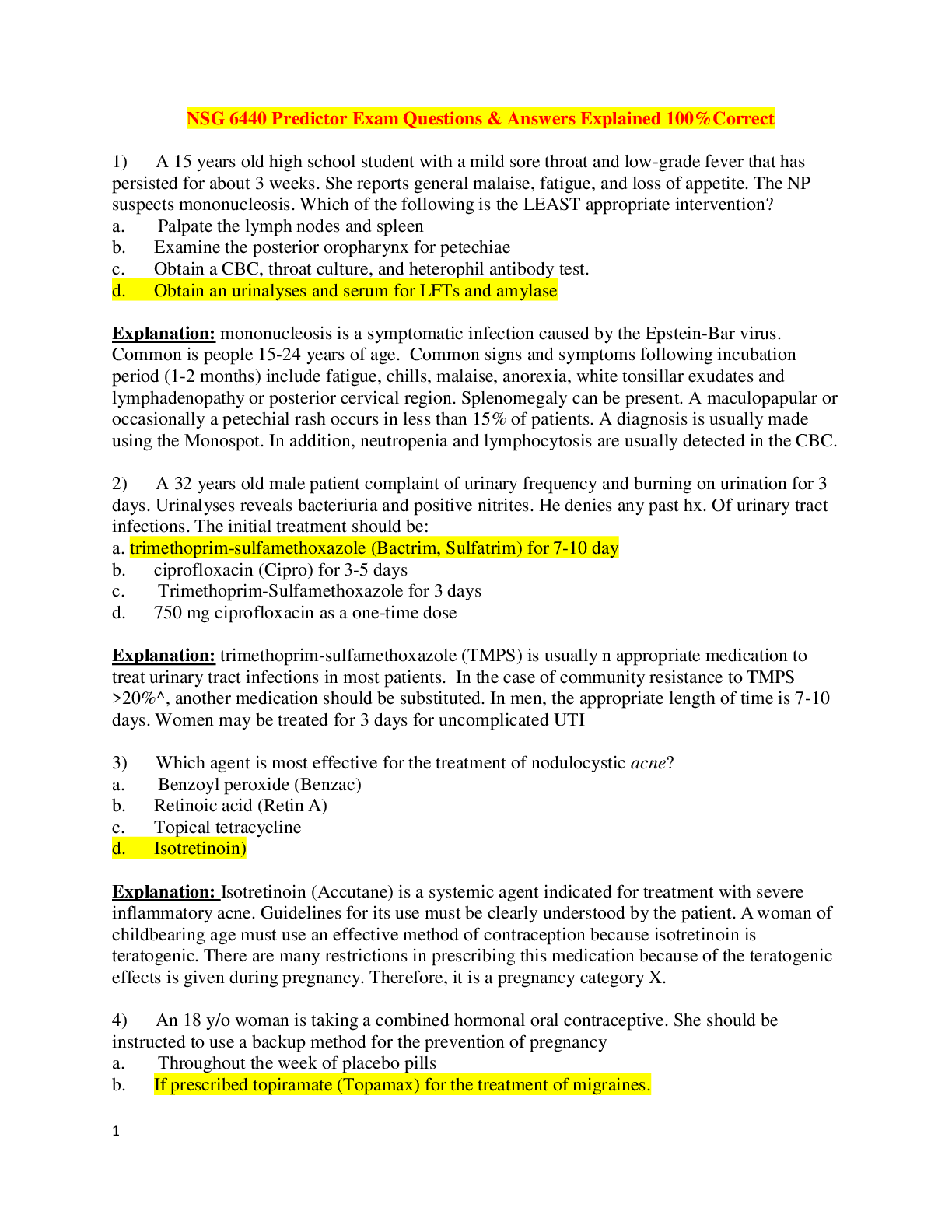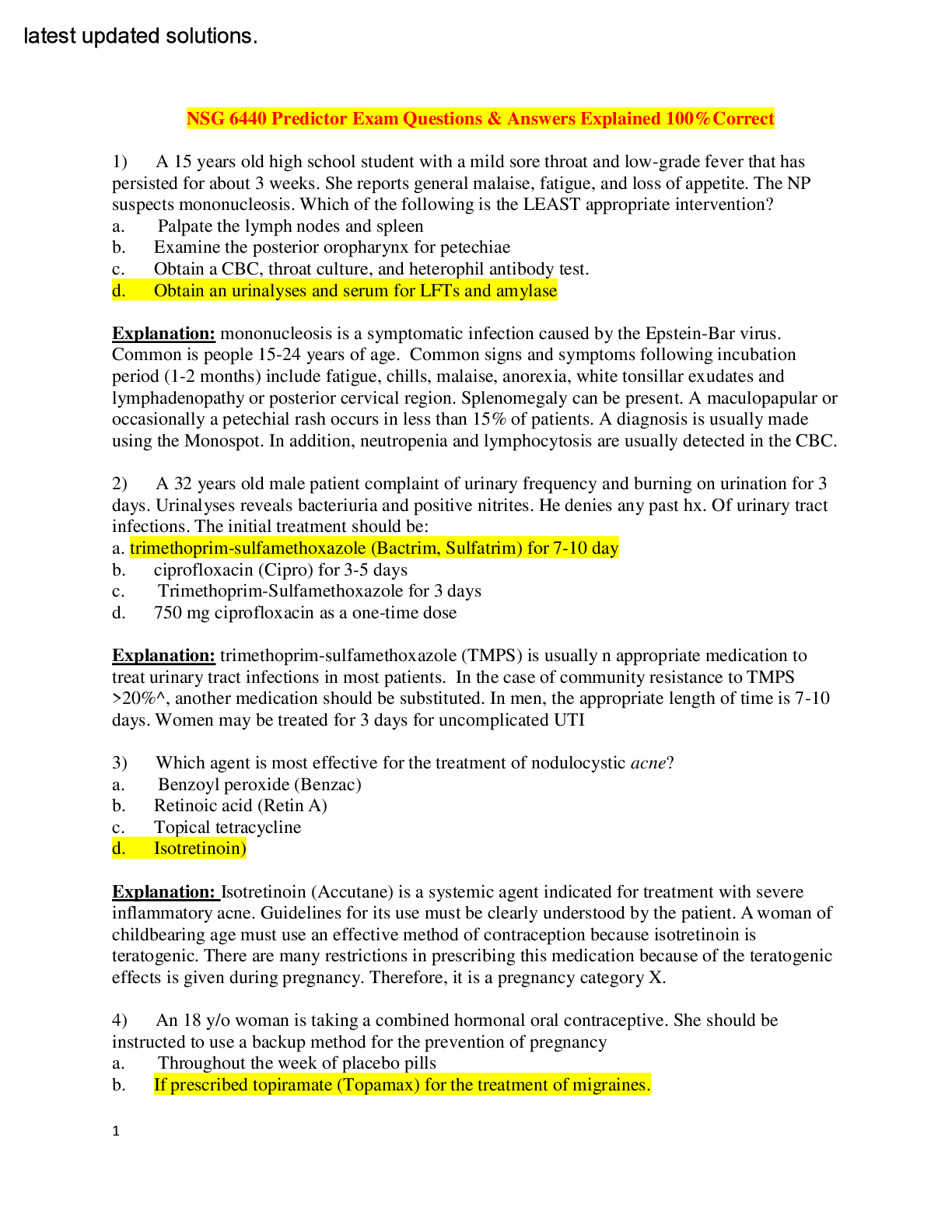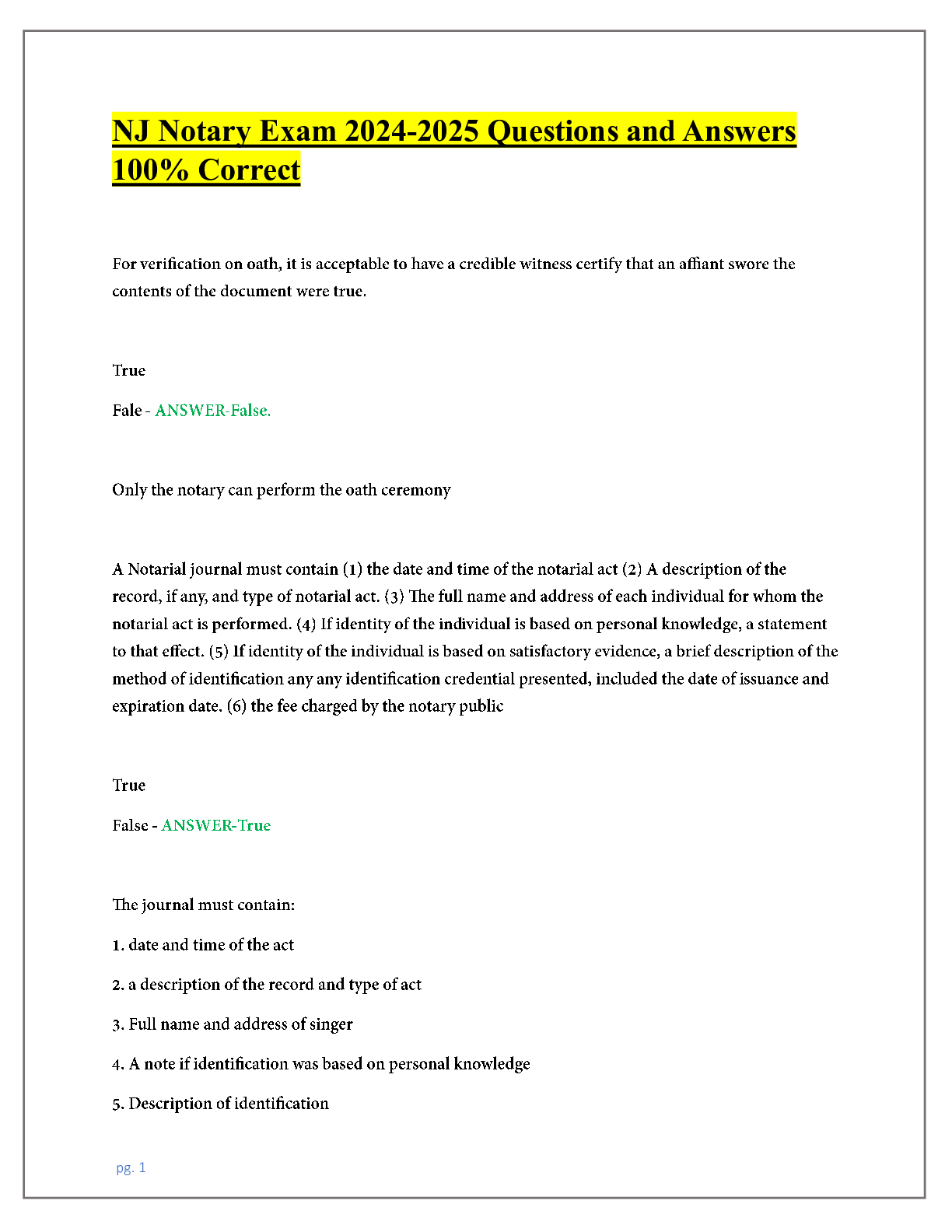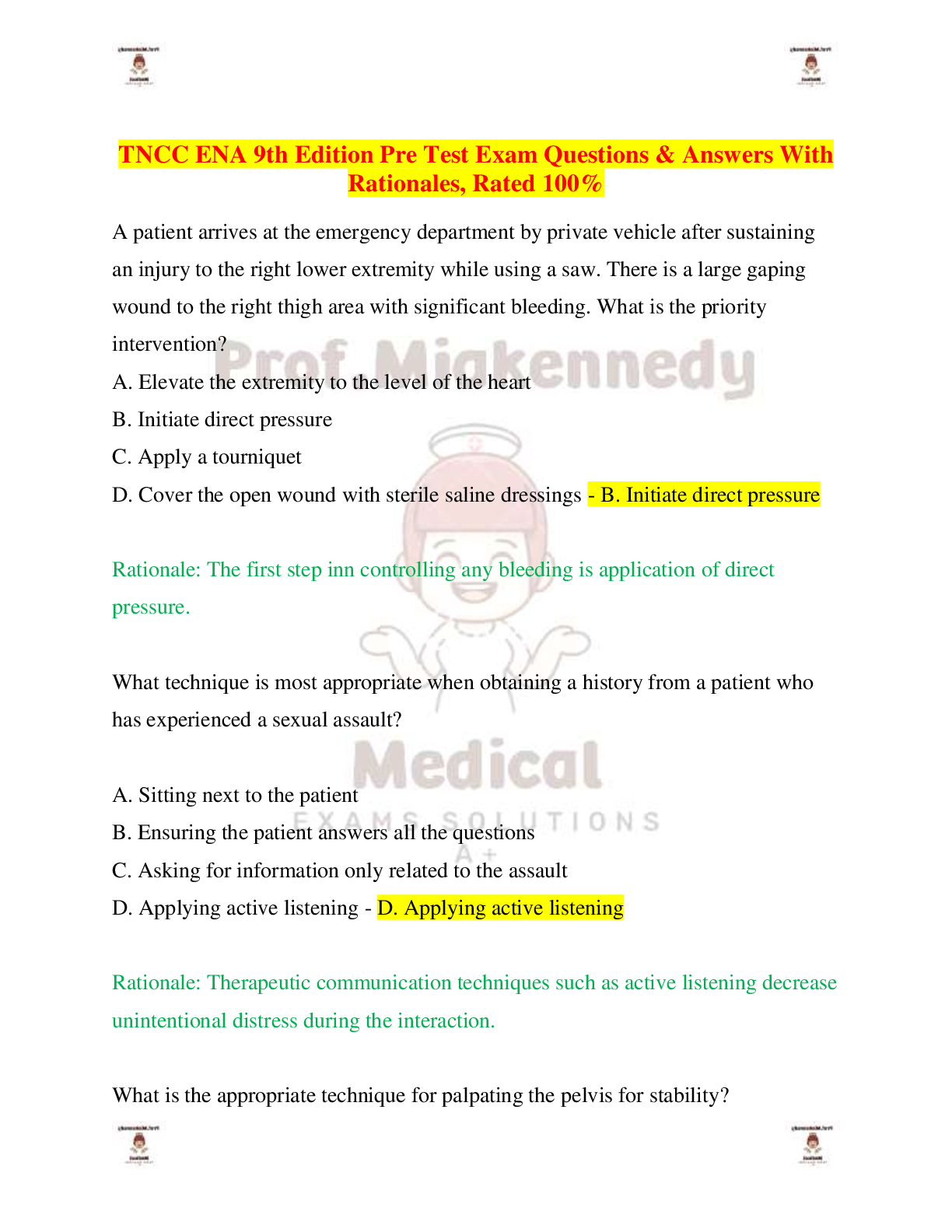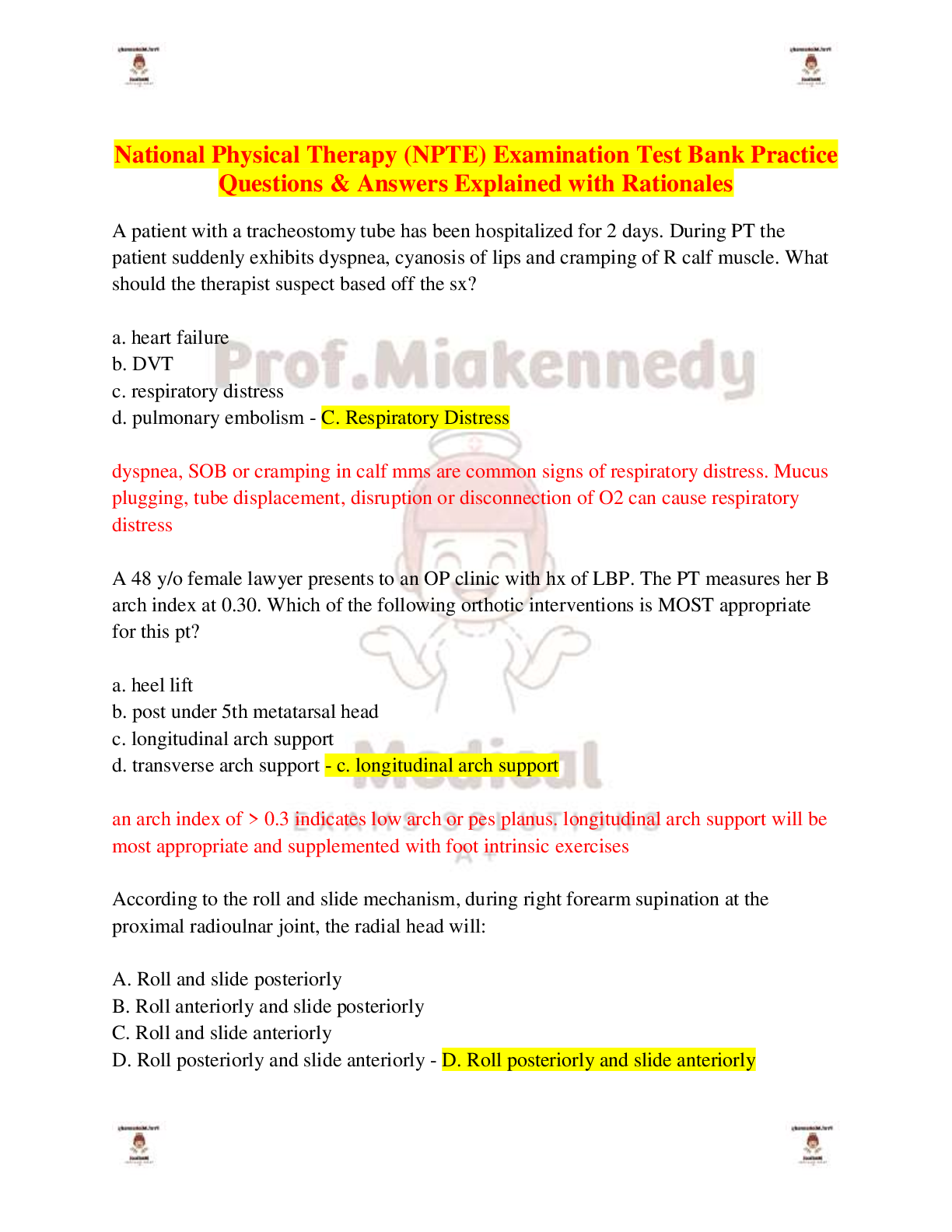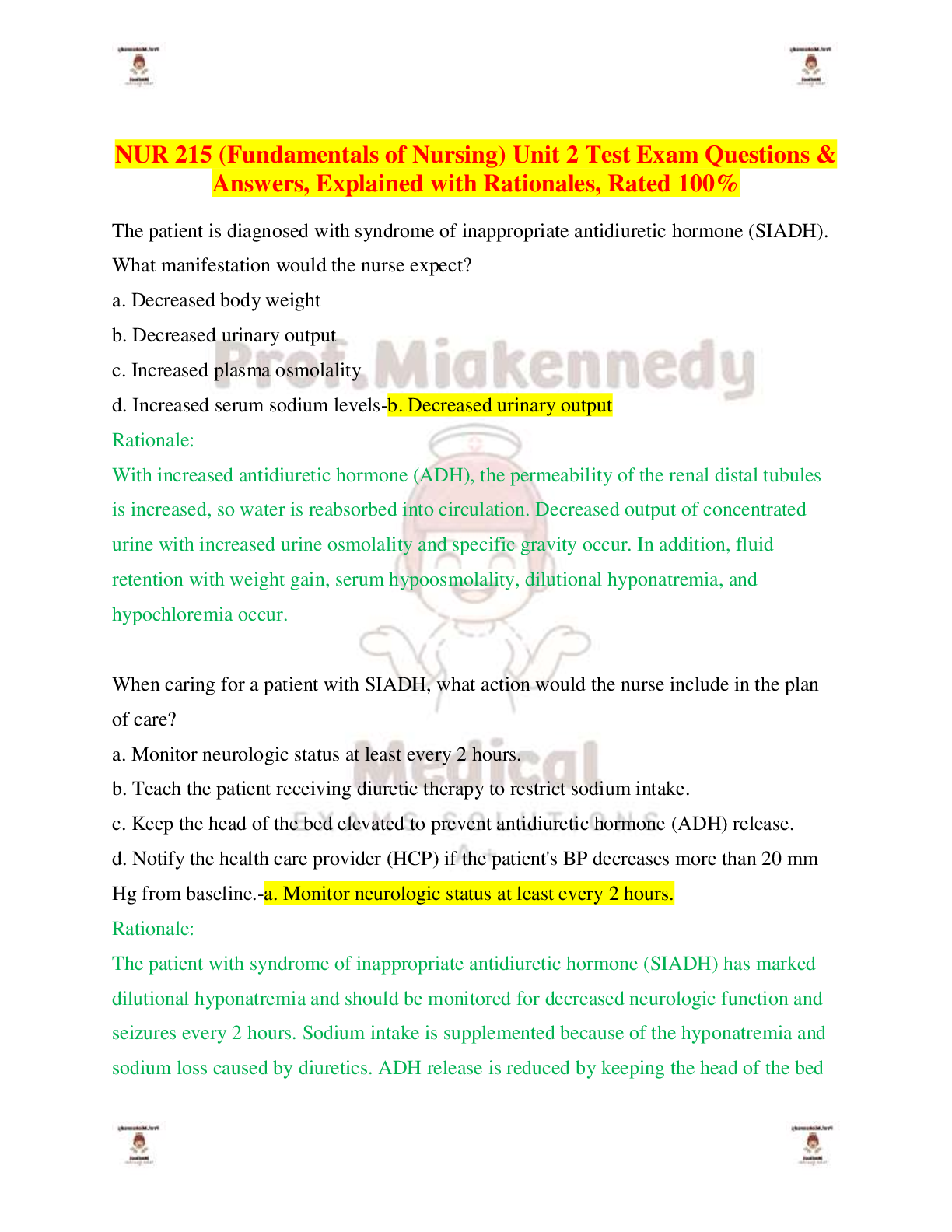*NURSING > EXAM > Psych/Mental Health Exit HESI Final Exam 2024/2025 Questions & Answers Explained with Rationales, Ra (All)
Psych/Mental Health Exit HESI Final Exam 2024/2025 Questions & Answers Explained with Rationales, Rated 100%
Document Content and Description Below
Psych/Mental Health Exit HESI Final Exam 2024/2025 Questions & Answers Explained with Rationales, Rated 100%-The home care nurse is visiting an older client whose spouse died 6 months ago. Which behav... ior by the client indicates ineffective coping? 1. Neglecting personal grooming 2. Looking at old snapshots of family 3. Participating in a senior citizens' program 4. Visiting their spouse's grave once a month - 1. Neglecting personal grooming Rational: Coping mechanisms are behaviors used to decrease stress and anxiety. In response to a death, ineffective coping is manifested by an extreme behavior that in some cases may be harmful to the individual physically or psychologically. The correct option is indicative of a behavior that identifies an ineffective coping behavior in the grieving process. A client with a diagnosis of major depression who has attempted suicide says to the nurse, "I should have died. I've always been a failure. Nothing ever goes right for me." Which response demonstrates therapeutic communication? 1. "You have everything to live for." 2. "Why do you see yourself as a failure?" 3. "Feeling like this is all part of being depressed." 4. "You've been feeling like a failure for a while?" - 4. "You've been feeling like a failure for a while?" Rationale: Responding to the feelings expressed by a client is an effective therapeutic communication technique. The correct option is an example of the use of restating. The remaining options block communication because they minimize the client's experience and do not facilitate exploration of the client's expressed feelings. In addition, use of the word "why" is nontherapeutic. When the mental health nurse visits a client at home, the client states, "I haven't slept at all the last couple of nights." Which response by the nurse illustrates a therapeutic communication response to this client? 1. "I see." 2. "Really?" 3. "You're having difficulty sleeping?" 4. "Sometimes, I have trouble sleeping too." - 3. "You're having difficulty sleeping?" Rationale: The correct option uses the therapeutic communication technique of restatement. Although restatement is a technique that has a prompting component to it, it repeats the client's major theme, which assists the nurse to obtain a more specific perception of the problem from the client. The remaining options are not therapeutic responses since none encourage the client to expand on the problem. Offering personal experiences moves the focus away from the client and onto the nurse. A client experiencing disturbed thought processes believes that his food is being poisoned. Which communication technique should the nurse use to encourage the client to eat? 1. Using open-ended questions and silence 2. Sharing personal preference regarding food choices 3. Documenting reasons why the client does not want to eat 4. Offering opinions about the necessity of adequate nutrition - 1. Using open-ended questions and silence Rationale: Open-ended questions and silence are strategies used to encourage clients to discuss their problems. Sharing personal food preferences is not a client-centered intervention. The remaining options are not helpful to the client because they do not encourage the client to express feelings. The nurse should not offer opinions and should encourage the client to identify the reasons for the behavior. A client admitted to a mental health unit for treatment of psychotic behavior spends hours at the locked exit door shouting, "Let me out. There's nothing wrong with me. I don't belong here." What defense mechanism is the client implementing? 1. Denial 2. Projection 3. Regression 4. Rationalization - 1. Denial Rationale: Denial is refusal to admit to a painful reality, which is treated as if it does not exist. In projection, a person unconsciously rejects emotionally unacceptable features and attributes them to other persons, objects, or situations. Regression allows the client to return to an earlier, more comforting, although less mature, way of behaving. Rationalization is justifying illogical or unreasonable ideas, actions, or feelings by developing acceptable explanations that satisfy the teller and the listener. A client diagnosed with terminal cancer says to the nurse, "I'm going to die, and I wish my family would stop hoping for a cure! I get so angry when they carry on like this. After all, I'm the one who's dying." Which response by the nurse is therapeutic? 1. "Have you shared your feelings with your family?" 2. "I think we should talk more about your anger with your family." 3. "You're feeling angry that your family continues to hope for you to be cured?" 4. "You are probably very depressed, which is understandable with such a diagnosis." - 3. "You're feeling angry that your family continues to hope for you to be cured?" Rationale: Restating is a therapeutic communication technique in which the nurse repeats what the client says to show understanding and to review what was said. While it is appropriate for the nurse to attempt to assess the client's ability to discuss feelings openly with family members, it does not help the client discuss the feelings causing the anger. The nurse's attempt to focus on the central issue of anger is premature. The nurse would never make a judgment regarding the reason for the client's feeling; this is nontherapeutic in the one-to-one relationship. On review of the client's record, the nurse notes that the mental health admission was voluntary. Based on this information, the nurse anticipates which client behavior? 1. Fearfulness regarding treatment measures. 2. Anger and aggressiveness directed toward others. 3. An understanding of the pathology and symptoms of the diagnosis. 4. A willingness to participate in the planning of the care and treatment plan. - 4. A willingness to participate in the planning of the care and treatment plan. Rationale: In general, clients seek voluntary admission. If a client seeks voluntary admission, the most likely expectation is that the client will participate in the treatment program since they are actively seeking help. The remaining options are not characteristics of this type of admission. Fearfulness, anger, and aggressiveness are more characteristic of an involuntary admission. Voluntary admission does not guarantee a client's understanding of their illness, only of their desire for help. When reviewing the admission assessment, the nurse notes that a client was admitted to the mental health unit involuntarily. Based on this type of admission, the nurse should provide which intervention for this client? 1. Monitor closely for harm to self or others. 2. Assist in completing an application for admission. 3. Supply the client with written information about their mental illness. 4. Provide an opportunity for the family to discuss why they felt the admission was needed. - 1. Monitor closely for harm to self or others. Rationale: Involuntary admission is necessary when a person is a danger to self or others or is in need of psychiatric treatment regardless of the client's willingness to consent to the hospitalization. A written request is a component of a voluntary admission. Providing written information regarding the illness is likely premature initially. The family may have had no role to play in the client's admission. The nurse is preparing a client for the termination phase of the nurse-client relationship. The nurse prepares to implement which nursing task that is most appropriate for this phase? 1. Planning short-term goals 2. Making appointment referrals 3. Developing realistic solutions 4. Identifying expected outcomes - 2. Making appointment referrals Rationale: Tasks of the termination phase include evaluating client performance, evaluating achievement of expected outcomes, evaluating future needs, making appropriate referrals, and dealing with the common behaviors associated with termination. The remaining options identify tasks appropriate for the working phase of the relationship. The nurse in the mental health unit recognizes which as being therapeutic communication techniques? Select all that apply. 1. Restating 2. Listening 3. Asking the client, "Why?" 4. Maintaining neutral responses 5. Providing acknowledgment and feedback 6. Giving advice and approval or disapproval - 1, 2, 4, 5 Rationale: Therapeutic communication techniques include listening, maintaining silence, maintaining neutral responses, using broad openings and open-ended questions, focusing and refocusing, restating, clarifying and validating, sharing perceptions, reflecting, providing acknowledgment and feedback, giving information, presenting reality, encouraging formulation of a plan of action, providing nonverbal encouragement, and summarizing. Asking why is often interpreted as being accusatory by the client and should also be avoided. Providing advice or giving approval or disapproval are barriers to communication. [Show More]
Last updated: 10 months ago
Preview 5 out of 53 pages

Loading document previews ...
Buy this document to get the full access instantly
Instant Download Access after purchase
Buy NowInstant download
We Accept:

Reviews( 0 )
$16.50
Can't find what you want? Try our AI powered Search
Document information
Connected school, study & course
About the document
Uploaded On
Sep 26, 2024
Number of pages
53
Written in
Additional information
This document has been written for:
Uploaded
Sep 26, 2024
Downloads
0
Views
35

